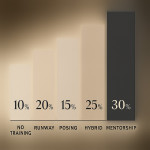Voice projection drills from pro coaches that boost a model's on-set presence
Feeling your poses disappear the second you open your mouth? These proven voice projection drills—straight from runway and commercial vocal coaches—help models command the set, sync effortlessly with directors and deliver lines that stick on playback. Follow the step-by-step exercises, gear tips and scheduling hacks below to strengthen your vocal power without losing the grace that books you jobs.
Why voice projection matters for models
On a busy set, ambient noise from lights, fans and chatter can sit around 60–70 dB. If your spoken lines hover under that, the audio team relies on extra takes or post-production fixes—both cost time. Consistent voice projection solves three common pain points:
- Fewer retakes—clear takes reduce shoot overruns.
- Stronger brand storytelling—your delivery carries emotion instead of straining for volume.
- Professional perception—crew and clients read confident speech as overall set competence.
Quick warm-up: 90-second breathing ladder
Every drill below starts with diaphragmatic activation. Stand tall, feet hip-width apart. Inhale for two counts, exhale on a gentle sss for four. Next round inhale three, exhale six; finish at four in, eight out. You have now primed intercostal muscles for steady airflow.
5 coach-approved voice projection drills
1. The Paper Cup Resonator
Hold a compostable paper cup (open end at lips). Speak a ten-word sentence into the cup, then repeat without the cup aiming to match the resonance you felt inside it. Do three sets. Coaches use this to help models locate forward placement without over-pushing.
2. Stair-Step Volume Glide
- Choose a one-syllable word—“shine” works well.
- Start at whisper, increase volume one step every repetition until you reach a firm, conversational projection.
- Descend back to whisper maintaining tone quality.
This drill ingrains dynamic control so you can hit director cues instantly.
3. Hand-on-Ribs Expansion Check
Place thumbs on the back of your lower ribs, fingers around the front. Inhale silently; ribs should expand sideways, not shoulders up. Count to eight on a steady vowel (ah) keeping rib cage open. Three rounds rehearses breath support crucial for long e-commerce copy.
4. Wall Bounce Articulation
Stand one metre from a flat wall. Recite tongue twisters such as “red leather, yellow leather,” listening for the reflection. Clear consonants bounce back sharply; slurred ones do not. Five minutes daily sharpens diction for close-mic beauty shoots.
5. The 5-Point Projection Arc
Mark five spots in the studio floor extending two to five metres. Deliver a short line to each spot, picturing a person there. The visual target anchors breath support and prevents upward laryngeal tension. Classic commercial coach favourite.
Scheduling: weave drills into a model's day
| Moment | Drill | Duration |
|---|---|---|
| Morning stretch | Breathing ladder + Hand-on-Ribs | 5 min |
| Commute or ride-share | Stair-Step Volume Glide (soft) | 3 min |
| Make-up chair | Wall Bounce (silent articulation) | 4 min |
| Lighting setup wait | Paper Cup Resonator | 2 min |
| Pre-take focus | 5-Point Projection Arc | 2 min |
Total daily vocal work: 16 minutes. Even during back-to-back bookings, you gain compound training without blocking calendar space.
Gear checklist for mobile vocal practice
- Collapsible paper cups (biodegradable) for resonator drill.
- Reusable straw to sip lukewarm water and keep folds hydrated.
- Compact dB meter app to ensure projected speech sits 10 dB above ambient.
- Noise-isolating in-ear monitors to replay practice takes discreetly.
Common mistakes and fast fixes
Over-projecting. Pushing past 85 dB strains folds. Aim for “support, not shout.”
Lip tension. If lips thin out, insert a quick horse-lip trill between takes.
Shallow breaths. Cue your Hand-on-Ribs drill; tactile feedback corrects automatically.
Integrate projection into portfolio assets

Booking managers increasingly request short voice demos alongside images. Record a 30-second reel applying these drills, then embed it on your Artfolio gallery. The platform's model training programs even rate audio clarity—an instant credibility badge. By presenting a polished sample that marries strong visuals with a clear, well-supported voice, you demonstrate versatility and save agents time; they gain a multi-sensory understanding of your talent in one cohesive click.
Need a full refresh? Our guide on external model training options details workshops that pair vocal coaches with runway mentors.
On-set collaboration tips
Projection alone will not carry the day if crew communication fails. Learn short, respectful call-outs featured in on-location etiquette essentials. Combining assertive yet warm vocal tone with concise set language positions you as a go-to professional.
Metrics: track your improvement
- Average take count per scripted line—target a 25 % drop after two weeks.
- Audio engineer feedback—aim for “no level issues” across three shoots.
- Self-recorded dB average—maintain 75–78 dB at one metre distance.
Export these stats when updating your composite card to mirror the data-driven approach recommended in crafting an online profile that aces the five-second scan.
Mini quiz: test your projection savvy
FAQ
- How long before a job should I start voice projection drills?
- Two weeks of daily 16-minute sessions create audible gains, but even three days of focused work can stabilise breath support for smaller shoots.
- Will stronger projection make me sound harsh on beauty campaigns?
- No. Projection relies on steady airflow, not force. When executed correctly, tone stays warm and flattering—ideal for soft-sell narratives.
- Can I train while recovering from a cold?
- Skip volume glides and stick to gentle breathing ladders until any throat irritation subsides. Hydration and rest take priority.
- Do I need a private vocal coach?
- Not always. Self-guided programs paired with app feedback cover fundamentals; a coach accelerates progress when scripts involve complex emotion or accents.
- What if the set is extremely noisy?
- Request a boom mic reposition and maintain 10 dB above ambient—your drills prepare you to reach that safely without shouting.
Takeaway & next step
Voice projection is as trainable as your walk. Integrate the drills, measure results and update your media kit. Ready to record a crystal-clear demo? Book a 20-minute studio slot this week and showcase your new vocal confidence.











